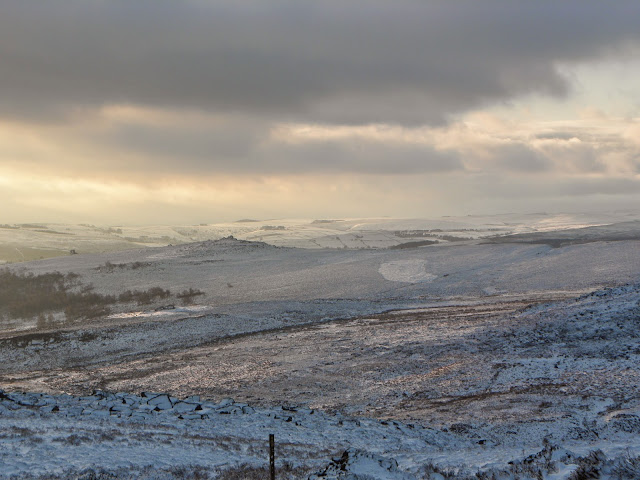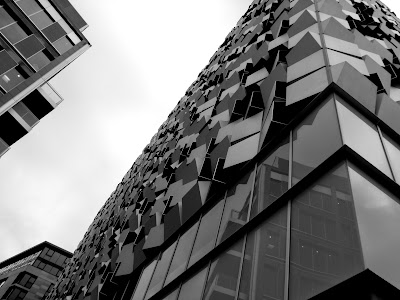Retrospective: Old Cameras And New
A look back at a few images from my old cameras and an introduction to the new.
New beginnings often have their origins in periods of reflection and looking back, so in that spirit I thought my first post in a long time might take the form of a retrospective. I have a few photos languishing in folders that might never otherwise see the light of day. I still don't and may never consider myself a photographer. I enjoy using cameras as a way of gaining a fresh perspective on the world. I aspire to improve on the technical side of taking pictures to some degree but it will always be something to enjoy rather than slogging away, trying to reach a level of sterile perfection!
Olympus SP-590UZ 2009 - 2010
This was my first ever digital camera, a bridge camera with a 26x fixed optical zoom lens; bigger than a compact camera but way smaller than a DSLR. I had bought it with my first Christmas bonus and ventured out into Ladies Spring Wood, which was close to where I lived at the time, in the Low Edges area of Sheffield. It was bitterly cold and snow was still on the ground.
 |
| Snow covered oak leaves in Ladies Spring Wood. One of my first ever digital photographs. |
That Christmas, like most others, I travelled over to a small village in North Lincolnshire where I grew up, to spend the festive period with my family. I decided to walk out along the River Trent a few miles to an isolated village, where in the grounds of the church a friendly robin kept me company while I enjoyed some refreshment.
 |
| A very friendly robin. |
Returning to Sheffield in January 2010, I was just in time for a very heavy snow-fall. I walked out to Burbage Moor in the Peak District. The snow was very deep for here in Britain, the whole landscape had an ethereal glow.
 |
| Winter landscape, overlooking Hathersage Moor from somewhere near Higger Tor. |
Once the snow had melted I walked around the city centre and found myself in the shadow of a recently completed building that had provoked something of a Marmite reaction in the people of Sheffield. Nicknamed 'The Cheese-grater', a multi-story car park with restaurant and commercial space on the ground floor. It's since settled in and has been accepted, mainly due to the development of St Paul's Place in the surrounding area.
 |
| 'The Cheese-grater'. |
Olympus SP-800UZ 2010 - 2011
My next camera was another Olympus bridge camera, even smaller than the last, the body was the size of a compact but with a massive 30x fixed optical zoom lens. Bridge cameras are a really flexible format and looking back, they produced good images combined with ease of use. Perfect for point and shoot photography.
 |
| Marsh marigold also called 'kingcups', 'golden knobs', 'bull's eyes' and many more. |
While out walking I came across an old stone water-trough inset in an old stone wall, which had formed it's own mini ecosystem of lush green plants and insects living in and around the water. Marsh marigolds are bright yellow flowers favouring ditches, wet meadows and shady places, which the water-trough provided. According to traditional folklore, it was hung in doorways to ward off witches and used as protection against lightning! It also has a long tradition associated with cows and milking as well as Mayday celebrations, which is when it's in flower.
 |
| Dandelion o'clock! |
The distinctive dandelion 'clock' or 'blowball' familiar to us all. The dandelion is named after the shape of it's leaves, like a lion's tooth or 'dens leonis'. Somewhat notorious for it's diuretic properties, the plant has also been known as 'piss-a-bed'.
 |
| A greenbottle fly glistens like a jewel in the sun. |
The SP-800UZ was especially suited to macro photography. I enjoyed peering into tiny worlds and seeing small, delicate details. I missed this very much when I later moved onto Micro Four Thirds format cameras.
Fujifilm FinePix HS10 2011 - 2012
The FinePix HS10 was a monster of a bridge camera, almost the same size as a DSLR with a 30x fixed optical zoom lens. The camera was so big, I bought my first tripod to help hold it steady!
 |
| A rare glimpse at the interior of the Anglican Chapel, Sheffield General Cemetery. |
I used the new tripod to take advantage of a hole that had been broken through the sealed doorway of the Anglican Chapel in the Sheffield General Cemetery. The combined weight of the camera and tripod was considerable and made day long walks a real endurance event. However, I didn't let it put me off.
 |
| Not technically perfect but I like the feel of this photo. |
At this time I bought my first walking guide for the Peak District, to save myself wandering around clueless and trying to find areas of interest at random. My first walk from the guidebook was around Win Hill, above the village of Hope, along the Sheffield to Manchester train line. I remember the weather was scorching hot and that the footpaths on the hills were packed with throngs of people; I deviated from the route by taking an inviting trail that led into the deep, cool shade of a wooded plantation.
 |
| In the cool, damp wood on the far shore of Ladybower Reservoir. |
The crowds were left behind and I entered a cool, damp, quiet world. Pine plantations always have a faintly spooky atmosphere about them, with an almost oppressive silence. I came across an old ruin of some kind. A thick carpet of moss covered every rock, broken doorway and shattered wall; it felt as if I had travel back in time to the Carboniferous period, millions of years ago. I fully expected to see some giant primordial amphibian through the trees.
 |
| A broken gatepost in Wiseman Hey Clough Plantation, near Win Hill. |
In the Autumn, when the leaves started to change colour, I walked around with no particular destination in mind, enjoying the seasonal changes and on a park bench I quickly arranged some fallen leaves and chestnuts, still in their spiky green jackets.
 |
| Autumn colours. |
My next camera and the ones thereafter, marked a change in the type of cameras I used, away from the bridge camera format and into the Micro Four Thirds systems.
Olympus Pen E-PM1 2012 - 2013
I first saw the Olympus Pen series in a magazine article that covered the camera's heritage as a much loved design classic that lasted from 1959 and into the 1980's before being converted from film to digital technology in 2009. The Pen series were always striking to look at, combining a metal body contrasted with a black textured grip; a classic look that still influences camera design today.
 |
| Rolling hills on the flank of Kinder Scout, Peak District. |
The Olympus Pen E-PM1 was a 'baby' pen, that is stripped down, with a smaller, all metal body and without some of the more advanced features of the flagship models. This made it much more affordable. The biggest change in moving from a bridge camera to the E-PM1 with it's Micro Four Thirds format was the introduction to interchangeable lenses. I was accustomed to the forgiving flexibility of the fixed lenses of the ultra-zoom bridge cameras. But I fell in love with the feel of Olympus Micro Four Thirds cameras; both in terms of how they feel in the hand - heavy and very well built, and the feel of the photographs - a pleasing warm but natural tone.
 |
| A monument in Sheffield General Cemetery. |
All of the photos in this blog except for one post, were taken with the Pen E-PM1. I felt the camera helped me take pictures as I saw them in my imagination. Unfortunately, looking back at some of the photos, I overused some of the 'art filters' on the camera, especially the 'dramatic tone' filter that gave some of the photos that heavy, dark moody look. Which is a shame, because when used correctly the art-filters were a lot of fun and helped catch some interesting images.
 |
| Street graffiti, artist unknown. |
'The Sheffield Code' was the last post I wrote before selling the E-PM1 during a period of unemployment. Thankfully, I found a great job with nice people at a decent salary and so I started to save towards a new camera. There were setbacks along the way but I'm happy to say that I recently bought the camera of my dreams and I look forward to our future adventures together!
Olympus OM-D E-M10 2015 -
I've stayed with Olympus and the Micro Four Thirds system, choosing the OM-D E-M10 in silver and black combined with the M.Zuiko 14-42mm f3.5-5.6 lens, an excellent starting set-up that can be modified in the future, should I feel the need to do so.
 |
| My new camera. Love it, although it will take some time to master. |
It seemed fitting to make something of a pilgrimage with my new camera to one of my favourite spots - Edale village in the Peak District. The weather was warm and sunny to begin with but soon turned over-cast, although I did manage to get a few test shots.
 |
| Testing out one of the 'art filters', old habits die hard! |
The OM-D E-M10 is the most advanced and therefore complex camera I've owned yet, so I'm mainly using the automatic settings as I gradually learn how to handle the controls and the new features.
 |
| A dor beetle basking in the warm sunshine. |
I've lots of projects in mind for the future, continuing to explore the world around me with the help of my camera. The world beyond my front door has never seemed so interesting.
I can't wait to get started!


